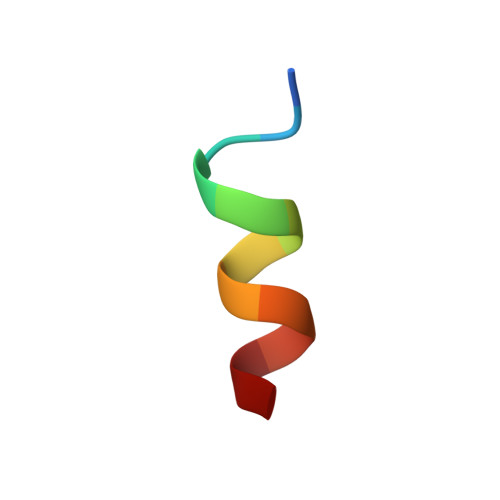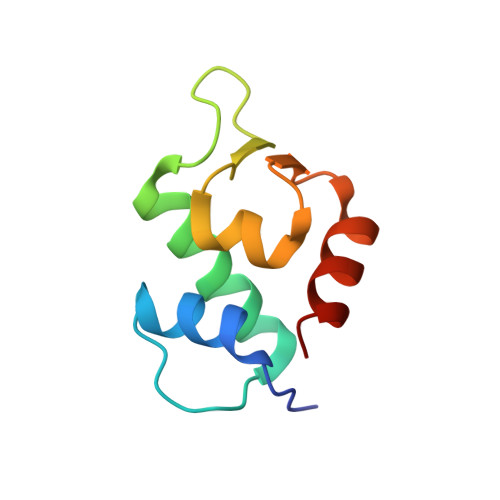D-peptide inhibitors of the p53-MDM2 interaction for targeted molecular therapy of malignant neoplasms.
Liu, M., Li, C., Pazgier, M., Li, C., Mao, Y., Lv, Y., Gu, B., Wei, G., Yuan, W., Zhan, C., Lu, W.Y., Lu, W.(2010) Proc Natl Acad Sci U S A 398: 200-213
- PubMed: 20660730
- DOI: https://doi.org/10.1073/pnas.1008930107
- Primary Citation of Related Structures:
3IWY - PubMed Abstract:
The oncoproteins MDM2 and MDMX negatively regulate the activity and stability of the tumor suppressor protein p53, conferring tumor development and survival. Antagonists targeting the p53-binding domains of MDM2 and MDMX kill tumor cells both in vitro and in vivo by reactivating the p53 pathway, promising a class of antitumor agents for cancer therapy. Aided by native chemical ligation and mirror image phage display, we recently identified a D-peptide inhibitor of the p53-MDM2 interaction termed (D)PMI-alpha (TNWYANLEKLLR) that competes with p53 for MDM2 binding at an affinity of 219 nM. Increased selection stringency resulted in a distinct D-peptide inhibitor termed (D)PMI-gamma (DWWPLAFEALLR) that binds MDM2 at an affinity of 53 nM. Structural studies coupled with mutational analysis verified the mode of action of these D-peptides as MDM2-dependent p53 activators. Despite being resistant to proteolysis, both (D)PMI-alpha and (D)PMI-gamma failed to actively traverse the cell membrane and, when conjugated to a cationic cell-penetrating peptide, were indiscriminately cytotoxic independently of p53 status. When encapsulated in liposomes decorated with an integrin-targeting cyclic-RGD peptide, however, (D)PMI-alpha exerted potent p53-dependent growth inhibitory activity against human glioblastoma in cell cultures and nude mouse xenograft models. Our findings validate D-peptide antagonists of MDM2 as a class of p53 activators for targeted molecular therapy of malignant neoplasms harboring WT p53 and elevated levels of MDM2.
Organizational Affiliation:
Institute of Human Virology and Department of Biochemistry and Molecular Biology, University of Maryland School of Medicine, Baltimore, MD 21201, USA.



















